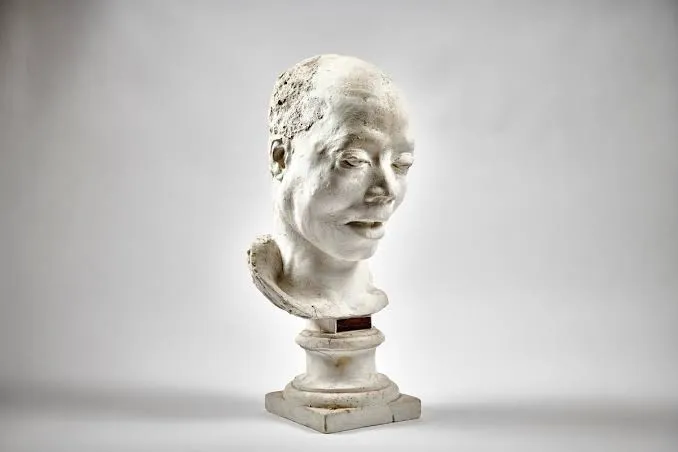He was born a prince in Bornu, became a slave in Marseille, saved the life of a governor, taught a future prince of Liechtenstein, and reformed Viennese Freemasonry. A polyglot scholar and guest of European courts, Angelo Soliman embodied everything Enlightenment Europe claimed to celebrate. Yet his end reveals a violence that contradicts the humanist ideal: after his death, his body was turned into a museum object. This is the true story of an African man with an extraordinary destiny, whom Europe sought to honor… then dehumanize.
Angelo Soliman: the African who enlightened Europe; then the Europe that stuffed him
A story of exceptional rise, a life confiscated, and a memory reconstructed

Enlightenment Europe liked to present itself as the continent of reason, science, and tolerance. Yet it was also in the heart of this century, which claimed to illuminate the world, that one of the most revealing destinies of European contradictions unfolded. The man was originally named Mmadi Make. He was born in Bornu, a powerful and connected Sahelian kingdom located at the borders of present-day Nigeria and Chad. Born into a princely family, he grew up among the local elite—warriors, administrators, and scholars. His world lay at the edge of the Sahara, in an Africa that had long interacted with caravan routes and political networks across the Sahel.
His childhood changed dramatically when he was captured and sold to merchants operating in Mediterranean markets. Transported to Marseille, then taken to Sicily, the young boy became the property of an aristocratic family. In that household, far from everything he had known, he received a rigorous education. He was taught religion, languages, and court etiquette, and his remarkable intelligence quickly became evident. Contemporary accounts note his ease of learning, exceptional memory, and insatiable curiosity. The child ripped from Africa gradually became Angelo—a name given to him long before he entered European history.
A turning point came in 1734, when he was presented to Prince Georg Christian von Lobkowitz, military governor of Sicily. Angelo accompanied him on campaigns, and it was on the battlefield that he performed the foundational act of his legend: he saved the prince’s life. This episode, confirmed by 18th-century documents, completely changed his status. In Lobkowitz’s eyes, Angelo ceased to be a mere servant. He became a companion, a man to be respected, a man to consult. This new position opened the doors of the Habsburg high nobility.
Upon the prince’s death, Angelo was integrated into the House of Liechtenstein, one of the most powerful families of the Empire. With Prince Joseph Wenzel I, he became far more than a servant. He participated in diplomatic affairs, ceremonies, and the social life of the court. The trust placed in him became spectacularly evident when he was entrusted with the education of young Aloys I, future Prince of Liechtenstein. Becoming a princely tutor in the 18th century was an exceptional status; only the most cultivated and worthy men could hold such a role. Angelo Soliman, an African captured as a child, achieved it.
One of the boldest acts of his life came in 1768 when he married Magdalena Christiani, of noble birth and sister of General Kellermann. In a Europe where racial hierarchies were beginning to harden, this marriage represented an immense transgression. It symbolized both the respect Soliman enjoyed and a social fluidity that, despite prejudice, remained possible before the rise of 19th-century pseudo-scientific racism.

In Vienna, Angelo became a familiar figure in high society. His erudition impressed aristocrats. According to contemporary documentation, he mastered seven languages: his childhood Kanuri, as well as Latin, English, French, German, Italian, and Czech. This linguistic versatility placed him among the most respected intellectuals of the era. He was invited to imperial events, including the wedding of Joseph II to Isabella of Parma. His acquaintances included the emperor himself, Count von Lacy, and Prince Gian Gastone de’ Medici. No other African in the 18th century is known to have achieved comparable integration at the heart of Viennese aristocracy.
This prominent social position was further reinforced by his role in Freemasonry. He joined the lodge Zur Wahren Eintracht, one of the most prestigious in Central Europe, frequented by Mozart, Haydn, Kazinczy, and many intellectuals. Masonic archives attest to his interactions with Mozart. More importantly, Soliman left a lasting mark. Documents note that he reformed rituals, giving them a new scholarly dimension. He rose to the rank of Grand Master—a dignity considered exceptional for a man of African origin at the time. Some authors even credit him as the “Father of Pure Masonic Thought,” showing that his contribution was not merely administrative but intellectual and doctrinal.
Yet despite this admiration, Europe always perceived him through an exoticizing lens. Researchers Wigger and Klein have shown that Soliman was analyzed through four successive “figures”: the “royal Moor,” representing the African in service of a noble; the “noble Moor,” the cultivated courtier; the “physiognomic Moor,” the man studied by proto-anthropologists attempting to classify human races; and finally the “mummified Moor,” the museum object. These four figures tell the story of Europe’s shifting gaze toward him, oscillating between fascination and dehumanization.
His death reveals the violence of these perceptions. In 1796, Soliman suffered a stroke and died in Vienna. His family requested a Christian burial. The Church refused. The imperial authorities then made a decision that epitomizes the hypocrisy of the Enlightenment century: they confiscated Angelo Soliman’s body. His corpse was flayed. His skin was tanned. He was mummified to serve as an ethnographic figure. Then his body was reconstructed around a mannequin, which was displayed at the Imperial Museum as an “African savage,” adorned with ostrich feathers and fanciful beads. The man who spoke seven languages, the tutor of a prince, the respected Freemason, was transformed into an exotic decoration meant to satisfy the racialized curiosity of the Viennese public.

The suffering did not end there. His daughter Joséphine requested the return of her father’s body. She was met with categorical refusal. For the authorities, Soliman was no longer a human being: he had become a specimen. His remains remained on display for decades, until the museum fire of 1848 destroyed this macabre reconstruction. Only a plaster cast of his face, made before the mummification, survives today as the sole reliable trace of his appearance, preserved at the Baden Museum.
And yet, his memory endured. His grandson, Eduard von Feuchtersleben, became a writer and participated in Austria’s 19th-century cultural life. In the 20th and 21st centuries, Angelo Soliman inspired major works. He appears in the opera Blackamoor Angel (2010), in Markus Schleinzer’s film Angelo (2018), in the novel Der ausgestopfte Barbar (2014), and in Olga Tokarczuk’s book Flights, for which she won the Nobel Prize in Literature. His story has become a symbol: of the longstanding African presence in Europe, but also of the dehumanization wrought by racial pseudo-sciences.
The life of Angelo Soliman challenges conventional narratives. Far from being an exotic anecdote, it reveals three essential truths. Africa produced individuals whose skill, intelligence, and talent allowed them to thrive within Europe’s elite, even when social structures seemed to preclude it. Enlightenment Europe, despite its universalist rhetoric, was never immune to systemic racism, capable of admiring a man in life while denying his humanity in death. Finally, memories may be confiscated, distorted, or manipulated, but they return—often stronger—when archives are revisited and histories restored.
Telling Angelo Soliman’s story today is not only about restoring the dignity of a man Europe sought to erase. It is about placing Africa back at the center of European history, where it has always been, but from which it was often excluded. It is about recognizing that the Black world was never marginal, and that individual trajectories can break racial boundaries that societies presume eternal. It is a reminder that a man’s humanity is defined not by color or origin, but by what he achieves.
Soliman was a captured prince, a uprooted child, a courtier, a master, an intellectual, a husband, a father. He was also a victim of European racial violence. Yet his story today can no longer be confiscated. It serves as a warning, a mirror, and an inspiration. It forces us to confront what the Enlightenment did to one of its own. It invites us to reconstruct a shared, faithful, and dignified memory.
Soliman did not merely traverse Europe: he illuminated it. And today, by telling his story, it is perhaps we who illuminate Europe.
Notes and References
- Philipp Blom, Angelo Soliman: Ein Afrikaner in Wien, Brandstätter Verlag, 2011
- “Geschichte der Afrikanistik in Österreich” (History of African Studies in Austria), archived July 6, 2011
- Wilhelm A. Bauer, A. Soliman, Hochfürstlische Der Mohr, W. Sauer (ed.), 1922
Summary
- Angelo Soliman: the African who enlightened Europe; then the Europe that stuffed him
- A story of exceptional rise, a life confiscated, and a memory reconstructed
- Notes and references
